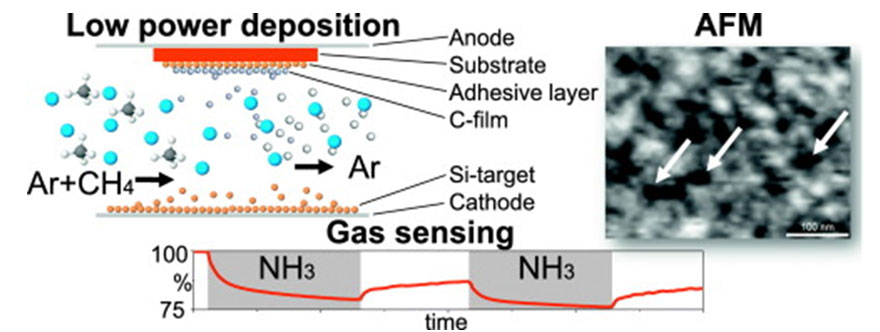Theoretical and experimental study of nanostructured functional materials perspective for gas sensors and optoelectronics
The work aims to create, experimental and theoretical study of nanostructured functional materials based on Si, Ge, C and ZnO in order to determine their fundamental properties for further use of these materials in optical and sensor electronics, in particular as electrically active elements, thin functional layers, light-emitting materials in optoelectronic devices, means of visualization, light indication and gas sensors and subwavelength optical micromechanical devices. Technological preparation methods were developed, and nanocomposites of SiO2:C:Zn, CDs@SiO2, aqueous solutions of carbon nanodots (CDs), micropowders and thin films ZnO:H, thin films GO, a-C, a-C:H, a-C:N, and nanoporous graphite-like films were synthesized. The characteristics of the sensor sensitivity of the reduced GO films and graphite-like films were obtained. It was found that molecular-like carbon clusters are responsible for the PL intensity of a-SiO2:C nanostructures. The nature of photoluminescence (PL) of hydrophilic CDs has been established. The optimal temperature conditions for the synthesis of CDs have been determined. The relationship between CDs size and conductivity of CDs@SiO2 nanocomposites was established for the first time. It was found that sp3 oxygen-centered carbon radicals are responsible for PL in Zn(acac)2/C2H5OH. It has been found that methane in ZnO causes the inclusion of hydrogen and increases the formation of shallow donors associated with their own defects. The nature of the centers responsible for the high electrical conductivity of microsized ZnO:H is established. It was found that depending on the orientation of the axis of Si, Ge nanowires relative to their internal crystal structure can decompose into an ordered chain of nanodroplets with both short lengths of nanowire fragments at the initial stage of instability and superlong. It was found that the evolution of cylindrical nanowires/plates at temperatures below the melting point leads to the formation of stable states with pronounced modulation of the cross-section.

| Attachment | Size |
|---|---|
| 213.93 KB |




